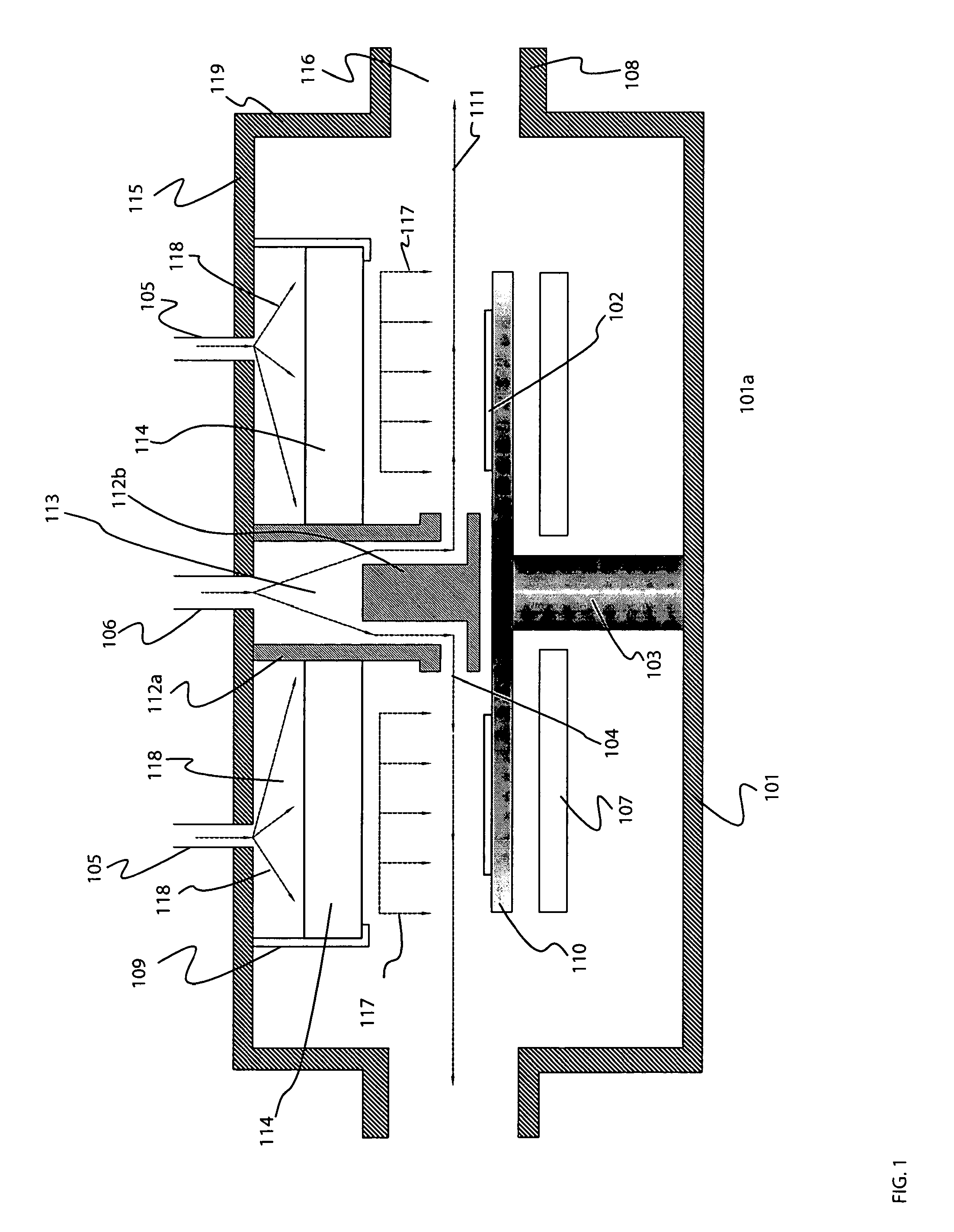Chemical vapor deposition reactor chamber
a chemical vapor deposition and reactor chamber technology, applied in chemical vapor deposition coating, metal material coating process, coating, etc., can solve the problems of large non-uniform boundary layer, large gas rise, and disturbance of laminar flow,
- Summary
- Abstract
- Description
- Claims
- Application Information
AI Technical Summary
Benefits of technology
Problems solved by technology
Method used
Image
Examples
Embodiment Construction
[0041]Referring now to the drawings, in which like numerals refer to like components or steps, there are disclosed broad aspects of various exemplary embodiments.
[0042]FIG. 1 is a schematic representation of a vertical sectional view of a multi-wafer dual flow MOCVD reactor 101a showing one embodiment of the principles of this invention.
[0043]The reactor 101a comprises a cylindrical reactor vessel 101 having a reactant gas injector 112a and 112b, a secondary gas injector 114, and a gas exit or exhaust 116. The reactor is roughly cylindrical having a vertical axis. The reactor may have a circular bottom plate with a diameter of about 60 cm, which in turn supports a rotating substrate holder or susceptor 110, on which more than one substrate or other objects are placed. The susceptor has a rotating axis 103 passing through an opening in the bottom plate which is hermetically sealed. Heating means 107 are disposed beneath the susceptor in order to provide heating to the susceptor which...
PUM
| Property | Measurement | Unit |
|---|---|---|
| diameter | aaaaa | aaaaa |
| distance | aaaaa | aaaaa |
| distance | aaaaa | aaaaa |
Abstract
Description
Claims
Application Information
 Login to View More
Login to View More - R&D
- Intellectual Property
- Life Sciences
- Materials
- Tech Scout
- Unparalleled Data Quality
- Higher Quality Content
- 60% Fewer Hallucinations
Browse by: Latest US Patents, China's latest patents, Technical Efficacy Thesaurus, Application Domain, Technology Topic, Popular Technical Reports.
© 2025 PatSnap. All rights reserved.Legal|Privacy policy|Modern Slavery Act Transparency Statement|Sitemap|About US| Contact US: help@patsnap.com



